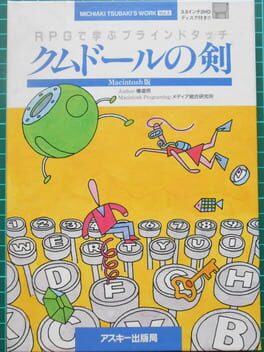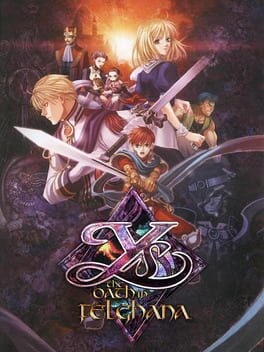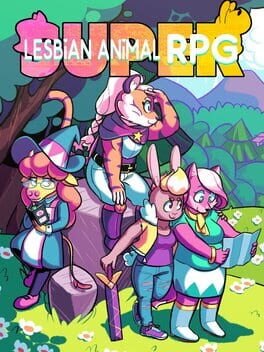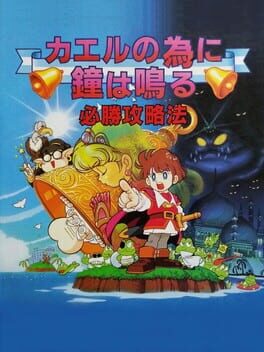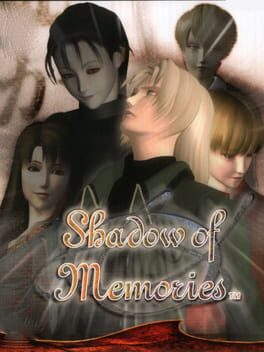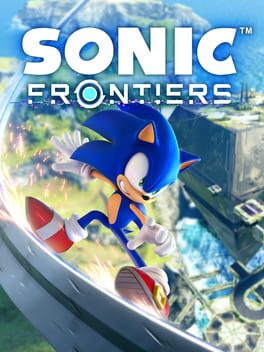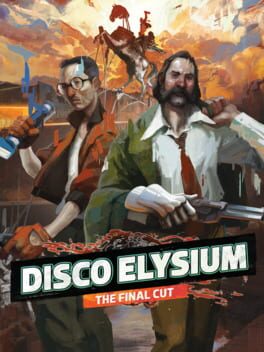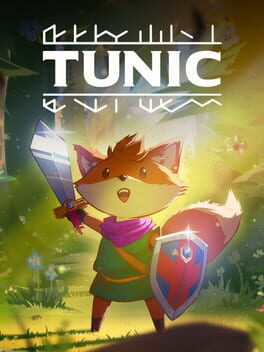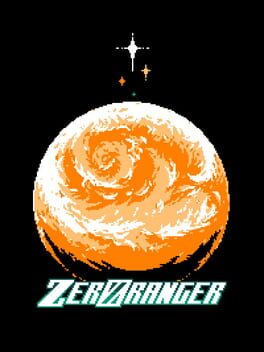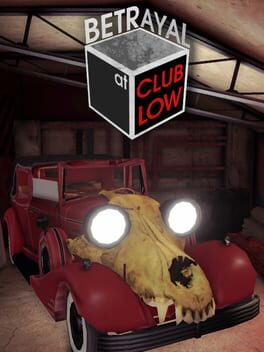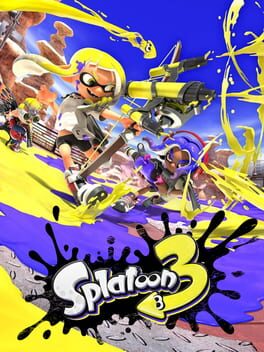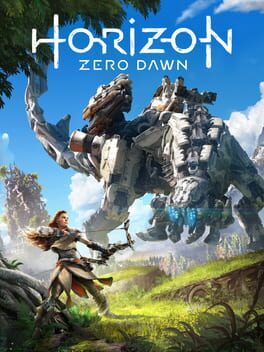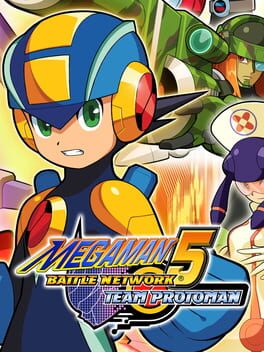oolongstains
49 Reviews liked by oolongstains
Kumdor no Ken
1991
The stuff dreams and nightmares are made of. Earthbound's cosmic horror climax sitting right next to Mavis Beacon touch-typing exercises. A critique and celebration of Dragon Quest not unlike Itoi's Mother series, just more spartan and deadpan. And it's finally translated in English, a privilege few PC-98 games enjoy even today (let alone most '90s East Asian PC software). Kumdor no Ken, or Sword of Kumdor, was creator Michiaki Tsubaki's most popular, well-regarded work during his short stint in games development, an edutainment staple for NEC and Mac computer labs. Many kids and young adults grew up with this, a story-driven word processing trainer for the JRPG age. Its story of exploring a strange land, overcoming bizarre obstacles, and indulging the frivolous but endearing people of this planet resonates with those same players today. Just imagine if Mario Teaches Typing had earned the kind of legacy and following a 16-bit Final Fantasy entry has now. Yet, until very recently, seemingly none in the West knew or cared about this.
| A typing tutor for all seasons |
Maybe I'm just built different, but Sword of Kumdor caught my attention several years ago while I was buzzing around decaying Japanese homepages and fan sites from the pre-Facebook days. It's almost pointillist visual style, learning to touch-type through turn-based combat, and bizarre sense of place and verisimilitude (or sekaikan) beguiled me. The closest Anglosphere equivalents to something this well-made, distinctive, and beloved across demographics are classics like Oregon Trail, or The Logical Journey of the Zoombinis. Whole petitions exist simply for reprints of the game for modern PCs, encased in the same unique book packaging ASCII & Tsubaki used back in 1991. Though my attempts to play through this adventure then were thwarted by the language barrier and poor keyboard skills, I could tell this was no mere fluke, forgery, or overhyped victim of nostalgia. Nothing on consoles, Western PCs, or the PC-98 and its competitors resembled Tsubaki's RPGs, almost all of which taught players about computing, typing, and other subject matter through idiosyncratic RPG stylings and structure. This was something special, and I had to know more. That's why [DISCLAIMER] I ended up being the beta tester on lynn's translation project, now having no excuse but to see this through.
Sword of Kumdor starts off unassuming, with barebones titles and a scrawly tutorial briefly going over controls. Using the F, J, and space keys to move forward, use the menu, and rotate your protagonist sounds weird and unintuitive, but comes naturally as you start the game in a galactic rest stop, waiting to board a rocket towards the titular world. Tsubaki describes our hero(ine) as a "Master of Blind Touch", a keyboard champion who's risen to the top but is bored, desperate for deeper understanding beyond their success on Earth. So we've traveled to a beleaguered, backwater planet calling for help, invaded by strange spellcasting monsters and sudden environmental disasters. It's not long before our own interplanetary trip to Kumdor goes awry, with the spacecraft malfunctioning and crash landing right into the starting town. With our keyboard keys and experience gone, no one recognizes us as the same touch-typing maestro promised to them. It's time to regain our equipment, master those typing skills once more, and figure out the cause of and solution to Kumdor's maladies!
As I've implied, most of the game loop involves exploring towns, overworlds, and dungeons, fighting random battles and collecting key items. This also entails the usual fiddling with inventory and managing your money, but Tsubaki challenges players to do something unique for a JRPG: play the whole game with touch-typing controls. I really cannot imagine how one would get through Sword of Kumdor on a gamepad, nor would it make any sense. From the most basic resting wrist fingerings to rapidly and precisely completing difficult sentences later on, this journey tries to make an avid typist out of anyone, even if its approach can get exhausting. One menu option brings you to a full keyboard HUD displaying your inputs, something I found necessary due to some PC-98 keys not natively mapping onto my US Windows layout. Another menu gives players a summary of their word-per-minute rating and trend over runtime, plus their WPM target which matters most at endgame. Teachers likely needed and asked for these tools the most, but anyone playing this to completion should find 'em useful too. I had to make a new .txt file in my Neko Project II emulator directory rebinding some keys to in-game equivalents, which made the virtual key-map important.
Forget years of button-mashing wearing out your gamepad—this game occasionally had me wondering if I'd finally feel some mushiness from my spacebar! (Not the case, thankfully, but then again my keyboard has faux Cherry Blue switches, designed to remain punchy.) I've long wondered if the Art Academy series could help me unlearn my chickenscratch handwriting and drawing, and parts of Sword of Kumdor did a lot to correct bad typing habits I've built over the ages. Everything centers around your muscle memory here, with slow and clumsy typing punished with Game Overs in combat and puzzles. Battles are all 1-on-1 affairs, as are "gates" which you unlock using the same system. Enemies shout prompts, you type them back as fast and accurate as you can, and this deals damage based on your EXP points total. Increasing max EXP requires visiting practice areas, usually within towns, which check if you've bought the right keys and then test you with them. Completing prompts fast with no errors leads to either an optional prompt at the end of fights—which reward the lion's share of an encounter's EXP as long as you don't mess up once—or a higher raise in max EXP during the aforementioned tests. These slight variations on the same repetitive exercises keeps most of the game feeling fresh despite what it demands from players.
| Old tales, new travails |
Another boon for us all is the Dragon Quest-like game progression, which involves finding and using movement items to proceed further. Though there's only one real "dungeon" stuck in the endgame, crossing each overworld section means talking to the right NPCs (which rarely feels tedious) to acquire the right stuff. For example, a mid-game fog valley barrier proves insurmountable until one locates the compass needed to navigate it. Diving into and out of lakes or ponds? Better snag a snorkel! And because there's no way to passively heal, Sword of Kumdor punishes players who forget to pack restoratives, either found throughout the realm or bought in towns. There's both consumable items with various properties and magic scrolls which only work if you have all the keys needed to type them. (Early on, you won't even have an Enter key with which to submit the spell name.) All this could easily be too simplistic or convoluted like in many contemporary JRPGs, but Tsubaki does a good job of balancing frequent typing with visiting new locations and people often.
If anything, Sword of Kumdor incentivizes its digital stenographers to chat up as many of the locals as possible. So much dialogue between villagers, scientists, and plot-critical individuals goes for light, often ironic or self-effacing conversation, the kind you'd expect from modern Earthbound-inspired xRPGs and adventure (ADV/VN) faire. Lake divers kvetch to you and one another about how the monsters plaguing their lake have left them with nothing good to do. Kumdor-ians complain endlessly about their inability to learn touch-typing and fight back, often resorting to increasingly absurd solutions. Hermits and dilapidated robots muse about the mysterious Dreampoint, which seems to be corrupted and responsible for the planet's septic response to its inhabitants. Sword of Kumdor starts you off as a detached observer of their foibles, humor, and resignation to what fate has in store for them. Only much later on do major NPCs recognize you as the purported "keyboard warrior" they asked for, and even then everybody's too busy trying to live, survive, and enjoy themselves to notice. Nothing in this pre-Mother 2 odyssey from 1991 ever gets as nakedly comical or referential as the usual suspects today, but all the signs are here from start to finish.
Most of an average playthrough (about 6-7 hours prior to endgame) goes by with little issue, intuitive and freshly paced as it is, up until endgame. Trudging through lava flows to reach safe land, or hopping across pits and solving gates, takes a bit more time, but that's far from the worst Tsubaki throws at you. It's the long-awaited final stretch, the Dreampoint, which turns Sword of Kumdor from an occasionally tricky edutainment JRPG into a brutal marathon of skill and carpal tunnel risks. The dungeon's gimmick? Find those warp points and save up enough dosh to buy the house they're hidden inside. While you can safely run from any battle elsewhere in the game, only suffering minor damage or easily healed status conditions if unlucky, most of the baddies patrolling this place can do terrifying things to players. Some render you invisible before curing, others saddle you with an unhealable darkness of vision (only fading if you can escape the Dreampoint), and a couple outright steal one or more keys if you run for it! My strategy evolved towards hoarding restoration food, saving very rare teleportation magic for emergencies, and then trying to brute-force through these oppressive mazy floors until I reached the next warp. Once I'd vanquished the "final boss", this conclusion felt more like the second half, taking as much time as events leading to it (if not more).
This difficulty and investment spike risks spurning players entirely. Indeed, I began to play less, making what progress I could in short sessions to avoid burnout. But it's also exactly the kind of grueling test that Tsubaki (and I presume his friends at ASCII Corp.) had in mind for budding touch-typists. What qualified as dungeons and side-areas before pales in comparison to this crawl, and I think it ultimately works out for the better. I'd reached just shy of 2000 EXP by the end, relying more on my typing skills than just pushing up numbers in the practice rooms when I could two-shot most enemies already. Previous emphasis on building muscle memory and character status gives way to the player themselves embodying their male or female avatar's struggle to save the world. Like the best finales in ye olde Phantasy Star or Ys saga of the era, strategy and self-pacing count more than grinding to a sure victory, and so the push-pull of tension and relief becomes so much stronger in turn. It recontextualizes most of the rest of the game as a cleverly-disguised series of quizzes and reviews, preparing us for this cram school's worth of battles, conundrums, and focused sprints to safety. And, being the masochist I am (not unlike '90s Japanese students here), I was hooked.
| Mysteries of the inner globe |
The Dreampoint itself summarizes many of the story's most interesting themes and oddities, a labyrinth of disfigured memories and boogeymen foreshadowing the big twist. So far, Sword of Kumdor has presented its planet as a microcosm of Showa-era Japan, with its polite but passive-aggressive populace and a strong bystander effect despite the unforeseen consequences of the planet's sentient core being invaded. Just like how the gravy train of real estate speculation and over-lending led to the bubble bursting not long before Tsubaki made this, Kumdor's palace royals and courtiers' fascination with the Dreampoint, a crossing point of everyone's conscious and subconscious thoughts, led to an ecological apocalypse of sorts. As a decorated yet anonymous outsider to these problems—the "Westerner" in the equation, not knowing local history, problems, etc.—it's just as problematic that we have to bail the leaders out of this predicament. Even as we help citizens and eventually the ultimate victim of the Dreampoint, what gratitude we receive comes mostly from observable touch-typing mastery. Think about whenever your boss or workplace values you most for results and business contributions, more so than just being, having that humanity and empathy we desire yet undervalue.
Beneath all the hijinks, calamities, and talking to sentient key-trees and key-fish lies a critical but optimistic set of messages for kids and adults in modern life. Through talent, determination, and side-stepping structural barriers whenever/wherever possible, one can recover from setbacks and prosper in ways previously unfathomed. By understanding one's environment and believing in your abilities—not taking things for granted or falling into impostor syndrome—you can convince the world around you of your worth, even if it shouldn't need such arguing. I appreciate what Tsubaki successfully communicates here even more because it does so without any hint of didacticism. Each ending, based on your endgame WPM target, reflects somewhat upon what comes after this arduous journey, be it the "bad" ending having Kumdor's king advocate for consuming oneself in fantasy (the book he wants to get back to instead of talking more with you), or the best ending having a couple of royals earnestly ask for you to tutor them in the touch-typing ways. Key NPCs only realize you're the Master of Blind Touch after your actions and progress prove that so, and the ancient non-Kumdorian inhabitants of the land, from wisened tree and fish folk to the mangled but salient denizens of the Dreampoint, comment on how far you've come without overselling the point. On the contrary, that "regular guy in the street" in Kumiel, the capital, doesn't pay players any mind, instead encouraging us to think about their relative privileges while other, more talkative folks escape volcanic eruptions or watch their jobs stagnate.
—————Ending spoilers below!—————
Something tells me Tsubaki was nonetheless reverent towards the principles of Yuji Horii's work on adventures like Portopia Serial Murder Case and, of course, the inescapable Dragon Quest franchise from '86 onward. Our protagonist's trip from wrecked ship to the neural nexus of this world both mirrors and reimagines Loto's quest in the original JRPG. Rather than starting in an open, hospitable castle with its jolly version of Lord British, we only reach the palace later on, just to be turned away because the real Master of Blind Touch would have solved everyone's problems already. Instead of a charismatic Dragonlord tempting players with a chance to join his side, the Dreampoint itself has parasitically merged with Mido, the prince of Kumdor whose own fears, flaws, and insecurities have bequeathed indescribable terrors upon the realm. Here the choice isn't whether or not to join evil, but to let yourself down at the bitter end, leaving this game's Loto to fester as a figurative child of Omelas.
Key moments in the original Dragon Quest's progression are rearranged, malformed, and presented to players no doubt familiar with JRPG cliches as something genuinely new. Bosses aren't cartoony Akira Toriyama drawings, but huge text prompts mixing in text from sources as wide as fairy tales (Snow White), journalism (a summary of '80s US-Japan relations and the Plaza Accord), and other unsettlingly real or familiar subject matter. Hotels go from quaint to multi-floor behemoths, medieval-garbed shopkeepers to lumpy blanks, and soundtracks from cheerful tunes to bright but ominous interludes. Even the biomes are now hostile: white fog traps you in a loop of encounters, water rapids destroy you underwater, and the undulating "void" of the Dreampoint's penultimate room can swallow you whole. In this messed-up but discernable reconfiguration of Dragon Quest-isms, much like the non sequiturs posed to players in something like Space Funeral, we're asked to rethink how much these tropes matter. After all, in a universe where the keyboard's mightier than the sword, what defines a hero's journey, the stakes in general, and how others perceive it all?
—————No more spoilers!—————
Shigesato Itoi often gets a truckload of credit in modern video games discourse for this kind of effortless, trenchant conveyance and literary game design. I think it's sobering to encounter other examples of such creators, working with their own restrictions and life stories, achieving much the same but to far less acclaim and/or recognition. Sword of Kumdor treats its participants with so much intelligence, no matter where you're from or which stage of your lifetime, that it can implicitly pass for an alternative-universe Mother series entry with such ease that I'm a little jealous. Here's exactly the kind of iterative yet unconventional trip through engaging systems, encounters, and heartwarming moments which I hoped existed somewhere in the Japanese PC games library, knowing its breadth and variety. Yes, this is far from a perfect game, what with its harsh dexterity requirements and cliff wall of an ending gauntlet. The audiovisuals, though very striking and identifiable, also play to the 16-color, high-resolution, FM-synthesized hardware in abrasive ways. Not everyone's gonna love eye-searing monsters, pulsing percussion-less and alien aural textures, or the Eisenstein-like use of strong colors to denote sleeping at inns or dying ingloriously in battle. But it all comes together to make something truly "PC-98" for me, a defining piece of entertainment which defies current assumptions about what one can and should expect.
| A sword for Kumdor, my axe for J-PC games scorned |
Years of Tumblr visual blogs, jokes about Sex 2, and the understandable but oft misleading characterization of the PC-98 as an erotic adventures platform makes Sword of Kumdor stand out that much more. It's definitely on the extreme, experimental end of the system's library, but quite the counter-example to explain how differently Japanese users perceived NEC's dominant PC up until Windows 95. True, otaku subcultures and reliable sales of horny soft to those audiences prevailed from the turn of the '90s to today, but the PC-98 catered to so many niche markets, like wargaming and fantasy JRPGs. Reductionist, convenient portrayals of this platform, both in and outside its original regions, downplay or even eliminate the chances that iconic games like Kumdor get the appreciation they deserve. And this isn't a close-and-shut case of Tsubaki's RPGs being the exception to the rule, as many other sims, ADVs, and RPGs didn't rely on any erotica to sell and stand out, ex. Yougekitai's occult detective premise or Tokio's satirical comedy of bubble-era economy and politics. It's a shame that the kind of enthusiast press and institutional promotion that all-ages games like Zoombinis gets in the US hasn't extended to Kumdor in its home country, working against all the fans' nostalgia and agitation to bring it back into the mainstream like it's the early '90s again.
For me, the critical burial and mere rumblings of relevance emanating in Sword of Kumdor's wake seems unjust. (Yes, I know life isn't fair and that these are just first-world problems, but gimme some slack here.) Writer, designer, and programmer Michiaki Tsubaki came from an outsider background in art design to iterate on the popular Dragon Quest mold in ways no one else accomplished. And it makes perfect sense he'd choose the PC-98, simultaneously a bastion for the business world and close-knit interest groups, to house these beguiling, often subversive adventures of learning. Yet so many out West (as well as in Japan, though much less so among uses/players from its heyday) can simply say "the PC-98 is for porn, or Touhou, or mahjong", etc. and leave it at that. I'm not going to say they're bad or wrong, given the large amount of eroge and "weird Japan" software you can find for the system, but Tsubaki didn't dabble in weirdness or exotica for its own sake, let alone fashion or vibes culture. His interactive media seeks to enthrall and unsettle people as much as help and inspire them, using these super-deformed, cute-yet-not elements and methods. In a sense, what he did with Kumdor, the INSIDERS duology, and Toki no Shirube adheres more to a traditional fully-fledged aesthetic than some superficial trend. And that's something I see with a general majority of PC-98 games, even some eroge ADVs.
In short, there's so much more to the PC-98 scene (and PC-88, and MSX, and…better stop here) in terms of daring, diverse, and dare I say important gaming experiences which Sword of Kumdor exemplifies. We can't settle for placing YU-NO or Rusty atop curated, canonical lists of the platform's greats and also overlook ambitious/art works like this, not unless all that matters is just ogling these games and their histories at a glance. (Again, I love quite a bit of eroge and better-known PC-X8 darlings, but they're not the end-all-be-all.) Tsubaki was just one talented bedroom-coding polymath among many in that milieu, pushing unwieldy hardware to its limits and daring players to keep up. Our unlikely Master of Blind Touch journeys from the end of one life into the beginnings of another, reassembling a broken world's hopes and dreams from above and within its core. That reconstructive mentality resonates with me, someone who's always willing to give these old, janky but often great PC games their due. You could find all kinds of ideas, stories, genre hybrids, different design paradigms, and truly unique fantasies and realities across East Asian PC games like this, complementing the console/arcade landscape with what those couldn't or didn't provide.
That said, it's not super easy for me to recommend this to anyone starting out with PC-98 emulation or using a real machine. I can think of very few notable games on the system which need this much keyboard configuration to feel all that great to play in long bouts. But it's still one of the most interesting xRPGs on the system—hell, in these genres' history! Not many stories can wield weirdness with purpose and the right amount of restraint like this. Not many edutainment titles dare their players to head into dangerous, troubling circumstances either. And not many are willing to risk players' attention and comfort for the sake of a tonally consistent, draining final act which wraps all loose ends, game loops, and story motifs into one. I have nothing but respect and admiration for Tsubaki's efforts here, and his lack of presence and biographical info even within Japan just saddens me. Regardless, I deem Sword of Kumdor the best way to get into this designer's catalog of bizarre yet relatable JRPGs, with the more computer science-based INSIDERS and Gaia-themed Stellar Sign comprising the rest of these PC-98 tomes. Of course, one might argue we're not getting the whole experience without translations of the dense hintbooks provided with each Tsubaki release, something ASCII Corporation did to help players and persuade educators to include the games in their curricula. But this first translation patch will definitely suffice!
| A typing tutor for all seasons |
Maybe I'm just built different, but Sword of Kumdor caught my attention several years ago while I was buzzing around decaying Japanese homepages and fan sites from the pre-Facebook days. It's almost pointillist visual style, learning to touch-type through turn-based combat, and bizarre sense of place and verisimilitude (or sekaikan) beguiled me. The closest Anglosphere equivalents to something this well-made, distinctive, and beloved across demographics are classics like Oregon Trail, or The Logical Journey of the Zoombinis. Whole petitions exist simply for reprints of the game for modern PCs, encased in the same unique book packaging ASCII & Tsubaki used back in 1991. Though my attempts to play through this adventure then were thwarted by the language barrier and poor keyboard skills, I could tell this was no mere fluke, forgery, or overhyped victim of nostalgia. Nothing on consoles, Western PCs, or the PC-98 and its competitors resembled Tsubaki's RPGs, almost all of which taught players about computing, typing, and other subject matter through idiosyncratic RPG stylings and structure. This was something special, and I had to know more. That's why [DISCLAIMER] I ended up being the beta tester on lynn's translation project, now having no excuse but to see this through.
Sword of Kumdor starts off unassuming, with barebones titles and a scrawly tutorial briefly going over controls. Using the F, J, and space keys to move forward, use the menu, and rotate your protagonist sounds weird and unintuitive, but comes naturally as you start the game in a galactic rest stop, waiting to board a rocket towards the titular world. Tsubaki describes our hero(ine) as a "Master of Blind Touch", a keyboard champion who's risen to the top but is bored, desperate for deeper understanding beyond their success on Earth. So we've traveled to a beleaguered, backwater planet calling for help, invaded by strange spellcasting monsters and sudden environmental disasters. It's not long before our own interplanetary trip to Kumdor goes awry, with the spacecraft malfunctioning and crash landing right into the starting town. With our keyboard keys and experience gone, no one recognizes us as the same touch-typing maestro promised to them. It's time to regain our equipment, master those typing skills once more, and figure out the cause of and solution to Kumdor's maladies!
As I've implied, most of the game loop involves exploring towns, overworlds, and dungeons, fighting random battles and collecting key items. This also entails the usual fiddling with inventory and managing your money, but Tsubaki challenges players to do something unique for a JRPG: play the whole game with touch-typing controls. I really cannot imagine how one would get through Sword of Kumdor on a gamepad, nor would it make any sense. From the most basic resting wrist fingerings to rapidly and precisely completing difficult sentences later on, this journey tries to make an avid typist out of anyone, even if its approach can get exhausting. One menu option brings you to a full keyboard HUD displaying your inputs, something I found necessary due to some PC-98 keys not natively mapping onto my US Windows layout. Another menu gives players a summary of their word-per-minute rating and trend over runtime, plus their WPM target which matters most at endgame. Teachers likely needed and asked for these tools the most, but anyone playing this to completion should find 'em useful too. I had to make a new .txt file in my Neko Project II emulator directory rebinding some keys to in-game equivalents, which made the virtual key-map important.
Forget years of button-mashing wearing out your gamepad—this game occasionally had me wondering if I'd finally feel some mushiness from my spacebar! (Not the case, thankfully, but then again my keyboard has faux Cherry Blue switches, designed to remain punchy.) I've long wondered if the Art Academy series could help me unlearn my chickenscratch handwriting and drawing, and parts of Sword of Kumdor did a lot to correct bad typing habits I've built over the ages. Everything centers around your muscle memory here, with slow and clumsy typing punished with Game Overs in combat and puzzles. Battles are all 1-on-1 affairs, as are "gates" which you unlock using the same system. Enemies shout prompts, you type them back as fast and accurate as you can, and this deals damage based on your EXP points total. Increasing max EXP requires visiting practice areas, usually within towns, which check if you've bought the right keys and then test you with them. Completing prompts fast with no errors leads to either an optional prompt at the end of fights—which reward the lion's share of an encounter's EXP as long as you don't mess up once—or a higher raise in max EXP during the aforementioned tests. These slight variations on the same repetitive exercises keeps most of the game feeling fresh despite what it demands from players.
| Old tales, new travails |
Another boon for us all is the Dragon Quest-like game progression, which involves finding and using movement items to proceed further. Though there's only one real "dungeon" stuck in the endgame, crossing each overworld section means talking to the right NPCs (which rarely feels tedious) to acquire the right stuff. For example, a mid-game fog valley barrier proves insurmountable until one locates the compass needed to navigate it. Diving into and out of lakes or ponds? Better snag a snorkel! And because there's no way to passively heal, Sword of Kumdor punishes players who forget to pack restoratives, either found throughout the realm or bought in towns. There's both consumable items with various properties and magic scrolls which only work if you have all the keys needed to type them. (Early on, you won't even have an Enter key with which to submit the spell name.) All this could easily be too simplistic or convoluted like in many contemporary JRPGs, but Tsubaki does a good job of balancing frequent typing with visiting new locations and people often.
If anything, Sword of Kumdor incentivizes its digital stenographers to chat up as many of the locals as possible. So much dialogue between villagers, scientists, and plot-critical individuals goes for light, often ironic or self-effacing conversation, the kind you'd expect from modern Earthbound-inspired xRPGs and adventure (ADV/VN) faire. Lake divers kvetch to you and one another about how the monsters plaguing their lake have left them with nothing good to do. Kumdor-ians complain endlessly about their inability to learn touch-typing and fight back, often resorting to increasingly absurd solutions. Hermits and dilapidated robots muse about the mysterious Dreampoint, which seems to be corrupted and responsible for the planet's septic response to its inhabitants. Sword of Kumdor starts you off as a detached observer of their foibles, humor, and resignation to what fate has in store for them. Only much later on do major NPCs recognize you as the purported "keyboard warrior" they asked for, and even then everybody's too busy trying to live, survive, and enjoy themselves to notice. Nothing in this pre-Mother 2 odyssey from 1991 ever gets as nakedly comical or referential as the usual suspects today, but all the signs are here from start to finish.
Most of an average playthrough (about 6-7 hours prior to endgame) goes by with little issue, intuitive and freshly paced as it is, up until endgame. Trudging through lava flows to reach safe land, or hopping across pits and solving gates, takes a bit more time, but that's far from the worst Tsubaki throws at you. It's the long-awaited final stretch, the Dreampoint, which turns Sword of Kumdor from an occasionally tricky edutainment JRPG into a brutal marathon of skill and carpal tunnel risks. The dungeon's gimmick? Find those warp points and save up enough dosh to buy the house they're hidden inside. While you can safely run from any battle elsewhere in the game, only suffering minor damage or easily healed status conditions if unlucky, most of the baddies patrolling this place can do terrifying things to players. Some render you invisible before curing, others saddle you with an unhealable darkness of vision (only fading if you can escape the Dreampoint), and a couple outright steal one or more keys if you run for it! My strategy evolved towards hoarding restoration food, saving very rare teleportation magic for emergencies, and then trying to brute-force through these oppressive mazy floors until I reached the next warp. Once I'd vanquished the "final boss", this conclusion felt more like the second half, taking as much time as events leading to it (if not more).
This difficulty and investment spike risks spurning players entirely. Indeed, I began to play less, making what progress I could in short sessions to avoid burnout. But it's also exactly the kind of grueling test that Tsubaki (and I presume his friends at ASCII Corp.) had in mind for budding touch-typists. What qualified as dungeons and side-areas before pales in comparison to this crawl, and I think it ultimately works out for the better. I'd reached just shy of 2000 EXP by the end, relying more on my typing skills than just pushing up numbers in the practice rooms when I could two-shot most enemies already. Previous emphasis on building muscle memory and character status gives way to the player themselves embodying their male or female avatar's struggle to save the world. Like the best finales in ye olde Phantasy Star or Ys saga of the era, strategy and self-pacing count more than grinding to a sure victory, and so the push-pull of tension and relief becomes so much stronger in turn. It recontextualizes most of the rest of the game as a cleverly-disguised series of quizzes and reviews, preparing us for this cram school's worth of battles, conundrums, and focused sprints to safety. And, being the masochist I am (not unlike '90s Japanese students here), I was hooked.
| Mysteries of the inner globe |
The Dreampoint itself summarizes many of the story's most interesting themes and oddities, a labyrinth of disfigured memories and boogeymen foreshadowing the big twist. So far, Sword of Kumdor has presented its planet as a microcosm of Showa-era Japan, with its polite but passive-aggressive populace and a strong bystander effect despite the unforeseen consequences of the planet's sentient core being invaded. Just like how the gravy train of real estate speculation and over-lending led to the bubble bursting not long before Tsubaki made this, Kumdor's palace royals and courtiers' fascination with the Dreampoint, a crossing point of everyone's conscious and subconscious thoughts, led to an ecological apocalypse of sorts. As a decorated yet anonymous outsider to these problems—the "Westerner" in the equation, not knowing local history, problems, etc.—it's just as problematic that we have to bail the leaders out of this predicament. Even as we help citizens and eventually the ultimate victim of the Dreampoint, what gratitude we receive comes mostly from observable touch-typing mastery. Think about whenever your boss or workplace values you most for results and business contributions, more so than just being, having that humanity and empathy we desire yet undervalue.
Beneath all the hijinks, calamities, and talking to sentient key-trees and key-fish lies a critical but optimistic set of messages for kids and adults in modern life. Through talent, determination, and side-stepping structural barriers whenever/wherever possible, one can recover from setbacks and prosper in ways previously unfathomed. By understanding one's environment and believing in your abilities—not taking things for granted or falling into impostor syndrome—you can convince the world around you of your worth, even if it shouldn't need such arguing. I appreciate what Tsubaki successfully communicates here even more because it does so without any hint of didacticism. Each ending, based on your endgame WPM target, reflects somewhat upon what comes after this arduous journey, be it the "bad" ending having Kumdor's king advocate for consuming oneself in fantasy (the book he wants to get back to instead of talking more with you), or the best ending having a couple of royals earnestly ask for you to tutor them in the touch-typing ways. Key NPCs only realize you're the Master of Blind Touch after your actions and progress prove that so, and the ancient non-Kumdorian inhabitants of the land, from wisened tree and fish folk to the mangled but salient denizens of the Dreampoint, comment on how far you've come without overselling the point. On the contrary, that "regular guy in the street" in Kumiel, the capital, doesn't pay players any mind, instead encouraging us to think about their relative privileges while other, more talkative folks escape volcanic eruptions or watch their jobs stagnate.
—————Ending spoilers below!—————
Something tells me Tsubaki was nonetheless reverent towards the principles of Yuji Horii's work on adventures like Portopia Serial Murder Case and, of course, the inescapable Dragon Quest franchise from '86 onward. Our protagonist's trip from wrecked ship to the neural nexus of this world both mirrors and reimagines Loto's quest in the original JRPG. Rather than starting in an open, hospitable castle with its jolly version of Lord British, we only reach the palace later on, just to be turned away because the real Master of Blind Touch would have solved everyone's problems already. Instead of a charismatic Dragonlord tempting players with a chance to join his side, the Dreampoint itself has parasitically merged with Mido, the prince of Kumdor whose own fears, flaws, and insecurities have bequeathed indescribable terrors upon the realm. Here the choice isn't whether or not to join evil, but to let yourself down at the bitter end, leaving this game's Loto to fester as a figurative child of Omelas.
Key moments in the original Dragon Quest's progression are rearranged, malformed, and presented to players no doubt familiar with JRPG cliches as something genuinely new. Bosses aren't cartoony Akira Toriyama drawings, but huge text prompts mixing in text from sources as wide as fairy tales (Snow White), journalism (a summary of '80s US-Japan relations and the Plaza Accord), and other unsettlingly real or familiar subject matter. Hotels go from quaint to multi-floor behemoths, medieval-garbed shopkeepers to lumpy blanks, and soundtracks from cheerful tunes to bright but ominous interludes. Even the biomes are now hostile: white fog traps you in a loop of encounters, water rapids destroy you underwater, and the undulating "void" of the Dreampoint's penultimate room can swallow you whole. In this messed-up but discernable reconfiguration of Dragon Quest-isms, much like the non sequiturs posed to players in something like Space Funeral, we're asked to rethink how much these tropes matter. After all, in a universe where the keyboard's mightier than the sword, what defines a hero's journey, the stakes in general, and how others perceive it all?
—————No more spoilers!—————
Shigesato Itoi often gets a truckload of credit in modern video games discourse for this kind of effortless, trenchant conveyance and literary game design. I think it's sobering to encounter other examples of such creators, working with their own restrictions and life stories, achieving much the same but to far less acclaim and/or recognition. Sword of Kumdor treats its participants with so much intelligence, no matter where you're from or which stage of your lifetime, that it can implicitly pass for an alternative-universe Mother series entry with such ease that I'm a little jealous. Here's exactly the kind of iterative yet unconventional trip through engaging systems, encounters, and heartwarming moments which I hoped existed somewhere in the Japanese PC games library, knowing its breadth and variety. Yes, this is far from a perfect game, what with its harsh dexterity requirements and cliff wall of an ending gauntlet. The audiovisuals, though very striking and identifiable, also play to the 16-color, high-resolution, FM-synthesized hardware in abrasive ways. Not everyone's gonna love eye-searing monsters, pulsing percussion-less and alien aural textures, or the Eisenstein-like use of strong colors to denote sleeping at inns or dying ingloriously in battle. But it all comes together to make something truly "PC-98" for me, a defining piece of entertainment which defies current assumptions about what one can and should expect.
| A sword for Kumdor, my axe for J-PC games scorned |
Years of Tumblr visual blogs, jokes about Sex 2, and the understandable but oft misleading characterization of the PC-98 as an erotic adventures platform makes Sword of Kumdor stand out that much more. It's definitely on the extreme, experimental end of the system's library, but quite the counter-example to explain how differently Japanese users perceived NEC's dominant PC up until Windows 95. True, otaku subcultures and reliable sales of horny soft to those audiences prevailed from the turn of the '90s to today, but the PC-98 catered to so many niche markets, like wargaming and fantasy JRPGs. Reductionist, convenient portrayals of this platform, both in and outside its original regions, downplay or even eliminate the chances that iconic games like Kumdor get the appreciation they deserve. And this isn't a close-and-shut case of Tsubaki's RPGs being the exception to the rule, as many other sims, ADVs, and RPGs didn't rely on any erotica to sell and stand out, ex. Yougekitai's occult detective premise or Tokio's satirical comedy of bubble-era economy and politics. It's a shame that the kind of enthusiast press and institutional promotion that all-ages games like Zoombinis gets in the US hasn't extended to Kumdor in its home country, working against all the fans' nostalgia and agitation to bring it back into the mainstream like it's the early '90s again.
For me, the critical burial and mere rumblings of relevance emanating in Sword of Kumdor's wake seems unjust. (Yes, I know life isn't fair and that these are just first-world problems, but gimme some slack here.) Writer, designer, and programmer Michiaki Tsubaki came from an outsider background in art design to iterate on the popular Dragon Quest mold in ways no one else accomplished. And it makes perfect sense he'd choose the PC-98, simultaneously a bastion for the business world and close-knit interest groups, to house these beguiling, often subversive adventures of learning. Yet so many out West (as well as in Japan, though much less so among uses/players from its heyday) can simply say "the PC-98 is for porn, or Touhou, or mahjong", etc. and leave it at that. I'm not going to say they're bad or wrong, given the large amount of eroge and "weird Japan" software you can find for the system, but Tsubaki didn't dabble in weirdness or exotica for its own sake, let alone fashion or vibes culture. His interactive media seeks to enthrall and unsettle people as much as help and inspire them, using these super-deformed, cute-yet-not elements and methods. In a sense, what he did with Kumdor, the INSIDERS duology, and Toki no Shirube adheres more to a traditional fully-fledged aesthetic than some superficial trend. And that's something I see with a general majority of PC-98 games, even some eroge ADVs.
In short, there's so much more to the PC-98 scene (and PC-88, and MSX, and…better stop here) in terms of daring, diverse, and dare I say important gaming experiences which Sword of Kumdor exemplifies. We can't settle for placing YU-NO or Rusty atop curated, canonical lists of the platform's greats and also overlook ambitious/art works like this, not unless all that matters is just ogling these games and their histories at a glance. (Again, I love quite a bit of eroge and better-known PC-X8 darlings, but they're not the end-all-be-all.) Tsubaki was just one talented bedroom-coding polymath among many in that milieu, pushing unwieldy hardware to its limits and daring players to keep up. Our unlikely Master of Blind Touch journeys from the end of one life into the beginnings of another, reassembling a broken world's hopes and dreams from above and within its core. That reconstructive mentality resonates with me, someone who's always willing to give these old, janky but often great PC games their due. You could find all kinds of ideas, stories, genre hybrids, different design paradigms, and truly unique fantasies and realities across East Asian PC games like this, complementing the console/arcade landscape with what those couldn't or didn't provide.
That said, it's not super easy for me to recommend this to anyone starting out with PC-98 emulation or using a real machine. I can think of very few notable games on the system which need this much keyboard configuration to feel all that great to play in long bouts. But it's still one of the most interesting xRPGs on the system—hell, in these genres' history! Not many stories can wield weirdness with purpose and the right amount of restraint like this. Not many edutainment titles dare their players to head into dangerous, troubling circumstances either. And not many are willing to risk players' attention and comfort for the sake of a tonally consistent, draining final act which wraps all loose ends, game loops, and story motifs into one. I have nothing but respect and admiration for Tsubaki's efforts here, and his lack of presence and biographical info even within Japan just saddens me. Regardless, I deem Sword of Kumdor the best way to get into this designer's catalog of bizarre yet relatable JRPGs, with the more computer science-based INSIDERS and Gaia-themed Stellar Sign comprising the rest of these PC-98 tomes. Of course, one might argue we're not getting the whole experience without translations of the dense hintbooks provided with each Tsubaki release, something ASCII Corporation did to help players and persuade educators to include the games in their curricula. But this first translation patch will definitely suffice!
The first two Ys games succeeded in large part due to their speed and momentum, a delicate balancing act created by the combination of fast and simple combat and a banger soundtrack. The Oath in Felghana understands this and absolutely recaptures their spirit in one of the best games this series has ever produced.
Felghana takes the solid bones of The Ark of Napishtim and polishes them to a mirror sheen: the combat and movement are faster and more fluid, with the removal of consumable items and a power-up + hit counter system creating a greater sense of momentum; boss fights are challenging, but cleverly designed and satisfying; the music is some of the best this series has ever seen. It’s a game with a laser-focus, nearly all combat and movement once you get into a dungeon, and that focus pays off in a game with few missteps.
But Felghana is also a master-class in how to remake a video game. Wanderers from Ys is much reviled, an experiment undone by its wonky combat and terrible use of vertical space. Felghana preserves what worked…but it’s also surprisingly faithful to what didn’t. It absolutely retains the verticality of the original game, its emphasis on platforming, with some room layoutsbeing practically identical re-creations. In doing so, it preserves the original’s identity, taking its failed ideas and re-visiting, re-contextualizing, and re-executing them to make them sing in a way they never did before.
Felghana takes the solid bones of The Ark of Napishtim and polishes them to a mirror sheen: the combat and movement are faster and more fluid, with the removal of consumable items and a power-up + hit counter system creating a greater sense of momentum; boss fights are challenging, but cleverly designed and satisfying; the music is some of the best this series has ever seen. It’s a game with a laser-focus, nearly all combat and movement once you get into a dungeon, and that focus pays off in a game with few missteps.
But Felghana is also a master-class in how to remake a video game. Wanderers from Ys is much reviled, an experiment undone by its wonky combat and terrible use of vertical space. Felghana preserves what worked…but it’s also surprisingly faithful to what didn’t. It absolutely retains the verticality of the original game, its emphasis on platforming, with some room layoutsbeing practically identical re-creations. In doing so, it preserves the original’s identity, taking its failed ideas and re-visiting, re-contextualizing, and re-executing them to make them sing in a way they never did before.
What a delight. This is a game I waited the better part of a decade for, having played its predecessor back in 2013. Preemptive game of the year edition was damn right.
This game is sweet, heartfelt, funny and just extremely endearing. The characters are well-written and have depth to them - you can tell they've been rattling around in the creator's head marinating in creative juices for a good while now.
Combat was a fun challenge and ultimately pretty surmountable for an RPG-averse gal like me. I had a few times where I game over-ed but managed to turn things around after figuring out some weaknesses.
These animals are gay. And thank goodness for that.
This game is sweet, heartfelt, funny and just extremely endearing. The characters are well-written and have depth to them - you can tell they've been rattling around in the creator's head marinating in creative juices for a good while now.
Combat was a fun challenge and ultimately pretty surmountable for an RPG-averse gal like me. I had a few times where I game over-ed but managed to turn things around after figuring out some weaknesses.
These animals are gay. And thank goodness for that.
This game absolutely luxuriates in its existence as a video game. You can practically see the designers standing around a whiteboard jotting down ideas for how to use the quirks and foibles of this little adventure game engine to tell as many stories and make as many jokes as possible. The combat system is purely deterministic which might be annoying in a lesser game, but here is used to great effect both cinematically and from a design perspective—grinding is replaces by moving through the game's many subplots and exploring its areas while still capturing the joy of numbers going up.
And what better platform for a game that wants to show off its materiality than the original Game Boy? Such a tremendously underpowered little thing, barely able to hold a game together, but Kaeru no Tame manages to flip that into a strength. Every new interaction and mechanic feels like a magic trick: the game pulls a zip line out from behind your ear in the final act with a flourish, and it startles and amazes precisely because you can tell that it's at the limits of what the system can accomplish.
They don't make 'em like this anymore, and I'm not sure they even can—at least not from a major video game studio. Now it's up to hobbyists and indies to keep these platforms alive and spin their restrictions into gold.
And what better platform for a game that wants to show off its materiality than the original Game Boy? Such a tremendously underpowered little thing, barely able to hold a game together, but Kaeru no Tame manages to flip that into a strength. Every new interaction and mechanic feels like a magic trick: the game pulls a zip line out from behind your ear in the final act with a flourish, and it startles and amazes precisely because you can tell that it's at the limits of what the system can accomplish.
They don't make 'em like this anymore, and I'm not sure they even can—at least not from a major video game studio. Now it's up to hobbyists and indies to keep these platforms alive and spin their restrictions into gold.
Shadow of Destiny
2001
What if you could travel back in time to prevent your own murder? PS2 adventure game Shadow of Destiny poses this question, then proceeds to do nothing interesting with it, stranding flat characters in 4 hours of mostly-just-slow-cutscenes where nothing important happens until the last 30 minutes.
However. Those 4 hours of cutscenes also manage to somehow all feel like they were crafted by aliens trying to approximate human interaction, and the extremely awkward, sometimes uncomfortable early-PS2 character models and bad voice acting just help strengthen that effect.
The game also has some of the most galaxy brain puzzle solutions I have ever seen. As an example, at one point protagonist Eike gets stabbed by somebody waiting behind a tree. Eike decides the way to prevent this is to travel back in time 500 years to prevent the tree from ever being planted in the first place. In another instance, Eike repeatedly travels back 100 years and changes the course of a family's history to acquire mundane items like a frying pan or a book.
All this combines to make the game unintentionally hilarious and an absolutely wild ride. I had a great time playing it. But, I really wish that the story could have also been good and compelling, because I don't think those two things need to be mutually exclusive
However. Those 4 hours of cutscenes also manage to somehow all feel like they were crafted by aliens trying to approximate human interaction, and the extremely awkward, sometimes uncomfortable early-PS2 character models and bad voice acting just help strengthen that effect.
The game also has some of the most galaxy brain puzzle solutions I have ever seen. As an example, at one point protagonist Eike gets stabbed by somebody waiting behind a tree. Eike decides the way to prevent this is to travel back in time 500 years to prevent the tree from ever being planted in the first place. In another instance, Eike repeatedly travels back 100 years and changes the course of a family's history to acquire mundane items like a frying pan or a book.
All this combines to make the game unintentionally hilarious and an absolutely wild ride. I had a great time playing it. But, I really wish that the story could have also been good and compelling, because I don't think those two things need to be mutually exclusive
Sonic Frontiers
2022
Shockingly brilliant and relentlessly at war with itself, you could probably create the perfect Sonic game by taking a list of every design decision Frontiers makes and doing the exact same thing or the exact opposite. It is a game defined by its contradictions. It is a game about going fast; jumping loses all your momentum. It's the first Sonic game whose levels I've enjoyed enough to try optimizing; its challenge times are a joke and it has no way to compare times with others or yourself. It asks you to track a complex web of set pieces through the sky; it has pop-in so bad that most of those set pieces are totally invisible unless you're practically on top of them.
Among a sea of open world games, Sonic Frontiers is one of precious few to deeply innovate on the form. It stridently makes the case that the act of movement through the world can be intrinsic to play rather than a chore to accomplish once and then hide behind fast travel forever after. And once it's given the player just enough time to internalize that lesson, it undercuts itself completely by adding a totally unnecessary fast travel system.
The cyberspace levels (classic self-contained Sonic level design) are layered and engaging—but only if you know how to use the undocumented Magnet Dash technique, wherein you cancel a homing attack into a massive air dash. This trick hits the perfect balance of being doable even by a non-speedrunner like me, totally recontextualizing level designs, and being conditional enough to keep the structure of the level relevant. But while some levels feel like they were designed with it in mind, others will trap you in inaccessible level geometry or totally wreck your camera.
Here's the thing, though: whatever else it may be, Sonic Frontiers is interesting. Some of its choices may be agonizingly conservative or blatantly stupid, true, but many are bold and an impressive number of those end up panning out. It's a AAA game that's messy and outré and occasionally fabulously daring at a time when AAA has come increasingly to mean intense polish and rigid uniformity. That alone is worth celebrating.
Among a sea of open world games, Sonic Frontiers is one of precious few to deeply innovate on the form. It stridently makes the case that the act of movement through the world can be intrinsic to play rather than a chore to accomplish once and then hide behind fast travel forever after. And once it's given the player just enough time to internalize that lesson, it undercuts itself completely by adding a totally unnecessary fast travel system.
The cyberspace levels (classic self-contained Sonic level design) are layered and engaging—but only if you know how to use the undocumented Magnet Dash technique, wherein you cancel a homing attack into a massive air dash. This trick hits the perfect balance of being doable even by a non-speedrunner like me, totally recontextualizing level designs, and being conditional enough to keep the structure of the level relevant. But while some levels feel like they were designed with it in mind, others will trap you in inaccessible level geometry or totally wreck your camera.
Here's the thing, though: whatever else it may be, Sonic Frontiers is interesting. Some of its choices may be agonizingly conservative or blatantly stupid, true, but many are bold and an impressive number of those end up panning out. It's a AAA game that's messy and outré and occasionally fabulously daring at a time when AAA has come increasingly to mean intense polish and rigid uniformity. That alone is worth celebrating.
A Short Hike
2019
Tunic
2022
Tunic is a magnificent, majestic thing. The little frayed edges, the lighting, the lack of much explicit text or direction, and the perfectly expansive score add up to a deep, submersing world with all sorts of unique little loving touches. I criticized Death's Door (which I played immediately before this) as being overly derivative of its influences; and while it's obvious to say that much of Tunic is following in Fez's footsteps, the most important difference is that Tunic still has a beating heart that it makes its own – the feeling-memories I treasure most about Fez are an overwhelming sense of nature, of discovery, of developing a true intimacy with the world you inhabit, and through that relationship also engaging with the developers and the puzzles & details they craft inside the world. Tunic has this same spirit to it; a soul that glows with love, plus ideas of its own like the manual-page-collecting element which is sublime.
A specific thing I love about how the game is paced is the wide variety of its puzzles. There's of course the language that most of the text is written in, which is a very longform puzzle (that you don't really need to solve), and several other macro puzzles that have their seeds planted by any random manual page for you to think about on the backburner, but the scale goes all the way down to the very smallest of 'puzzles' akin to an "I Spy" book. 'Look at this screen, is there geometry out of place indicating an unexpected path?' or 'here is a chest, can you find a way to get there?' – little crumbs of puzzles that are idiomatic to games and idiomatic media, placed well and with lovely variety. There's a similar feeling there to what I loved about The Witness as well, teaching you some tiny element and then iterating on it several times with orthogonal twists.
I quite enjoyed the combat and action elements of the game too. Things felt like an appropriate contemporary mix of classic action game combat and some modern sensibilities. The sword combat is reasonably limited such that the magic abilities you get have immediate apparent value – I actually used the "swap hp potions for mp potions" charm more than once! The boss fights are generally very high quality with fantastic sound and visual design too, and I felt the difficulty was very well calibrated. Not too long to figure out their weak points, not too short that those weak points trivialize the fight.
The game has several of its own innovations to help it stand apart from its forebears, too. I like that the amount of currency placed into your death pickups is quite small, fitting the pacing of the game's economy, and the addition of those pickups stunning enemies when grabbed is very cool. I ended up delaying my pickups during the 'final' bossfight as part of my strategy to stun at an advantageous time. I also liked the responsive & lightweight inventory menu, although the 3-slot assignment system was clunky at times and could have used some small shortcuts IMO. The degree of menuing you can do mid-boss fight is good despite that, though, much like Fromsoft's games. It allows you to play around more in the sandbox with a lot of tools that, in a more weighty menu system, wouldn't be worth committing to because of their tradeoffs.
I only wish that it had wormed its way into my heart a little more with perhaps some more obvious development of the main two characters, but that's a rather small complaint compared to the amount of sheer brilliance in this game – I'd started this review as a 4.5 because of it, but listing out how deeply I enjoyed it, it just felt wrong to not give a perfect score. I dearly hope that it opens some players' minds the same way Fez opened mine back in its day. For that hope and for many more reasons, it's a trivial decision to say this is my favorite game of the year.
"Knowledge untempered by kindness is no knowledge at all."
A specific thing I love about how the game is paced is the wide variety of its puzzles. There's of course the language that most of the text is written in, which is a very longform puzzle (that you don't really need to solve), and several other macro puzzles that have their seeds planted by any random manual page for you to think about on the backburner, but the scale goes all the way down to the very smallest of 'puzzles' akin to an "I Spy" book. 'Look at this screen, is there geometry out of place indicating an unexpected path?' or 'here is a chest, can you find a way to get there?' – little crumbs of puzzles that are idiomatic to games and idiomatic media, placed well and with lovely variety. There's a similar feeling there to what I loved about The Witness as well, teaching you some tiny element and then iterating on it several times with orthogonal twists.
I quite enjoyed the combat and action elements of the game too. Things felt like an appropriate contemporary mix of classic action game combat and some modern sensibilities. The sword combat is reasonably limited such that the magic abilities you get have immediate apparent value – I actually used the "swap hp potions for mp potions" charm more than once! The boss fights are generally very high quality with fantastic sound and visual design too, and I felt the difficulty was very well calibrated. Not too long to figure out their weak points, not too short that those weak points trivialize the fight.
The game has several of its own innovations to help it stand apart from its forebears, too. I like that the amount of currency placed into your death pickups is quite small, fitting the pacing of the game's economy, and the addition of those pickups stunning enemies when grabbed is very cool. I ended up delaying my pickups during the 'final' bossfight as part of my strategy to stun at an advantageous time. I also liked the responsive & lightweight inventory menu, although the 3-slot assignment system was clunky at times and could have used some small shortcuts IMO. The degree of menuing you can do mid-boss fight is good despite that, though, much like Fromsoft's games. It allows you to play around more in the sandbox with a lot of tools that, in a more weighty menu system, wouldn't be worth committing to because of their tradeoffs.
I only wish that it had wormed its way into my heart a little more with perhaps some more obvious development of the main two characters, but that's a rather small complaint compared to the amount of sheer brilliance in this game – I'd started this review as a 4.5 because of it, but listing out how deeply I enjoyed it, it just felt wrong to not give a perfect score. I dearly hope that it opens some players' minds the same way Fez opened mine back in its day. For that hope and for many more reasons, it's a trivial decision to say this is my favorite game of the year.
"Knowledge untempered by kindness is no knowledge at all."
ZeroRanger
2018
ZeroRanger is, like many other retro-styled indie games, a tribute to the past - in this case, a love letter to the entire shmup genre. It's absolutely packed to the gills with references, like boss fights with the Vic Viper, or projectiles pulled straight from the final boss of Esp Ra.De.. Yet despite this, it never coasts on the strength of its influences or falls into the realm of pastiche. It's a fun, solid shmup in its own right, with two ships, several selectable weapons, and a transformation mechanic all giving you a lot of flexibility in how you approach its various stages and boss fights. To top it off, it's all wrapped up in a gorgeous presentation and a killer soundtrack (seriously the soundtrack is really really good). Also you can transform your ship into a sword-wielding robot, which rules.
And then you finish the first loop and the game's meta-narrative takes hold, sending you through an unexpected and exciting set of twists and turns, both narrative and mechanical. This is a rare story-focused shmup, and an even rarer one where that story is actually compelling. And while other games may have done a lot of the things ZeroRanger is doing, nobody has ever done them in the context of a shmup before, and it's thrilling.
And then you finish the first loop and the game's meta-narrative takes hold, sending you through an unexpected and exciting set of twists and turns, both narrative and mechanical. This is a rare story-focused shmup, and an even rarer one where that story is actually compelling. And while other games may have done a lot of the things ZeroRanger is doing, nobody has ever done them in the context of a shmup before, and it's thrilling.
Betrayal At Club Low
2022
I was really excited about this game like I am anytime Cosmo D releases something new, but I walked away a little bit disappointed this time.
Here, Cosmo D pushes into new territory with a short RPG built around dice-based skill checks. It’s as strange a take on that as you’d expect, with customizable pizza dice and a physique skill that’s frequently used to contort your body in weird ways to get people’s attention. It’s fun and unique, with some enjoyable writing that adds new layers to the Off-Peak universe, but the balance of the default difficulty is off - while the game is built to be replayed several times, I had a hard time progressing whether I built my character as a jack-of-all trades or focused on one or two skills, and I had to save scum once I hit the late game. I think I’d probably enjoy it a lot more on the lower difficulties, so I may give that a try when I inevitably come back to this.
Also, Cosmo D’s Off-Peak universe is one of the strangest and most creatively bizarre in video games, and that’s very much on display here. But the move away from a first-person perspective and the focus on RPG mechanics takes some of the focus off the game world, which means there’s not as much room for the details of that strangeness as before, and I found the game less engrossing as a result.
Regardless, I’m excited to see Cosmo D push into new territory, and I’m excited for what he does next!
Here, Cosmo D pushes into new territory with a short RPG built around dice-based skill checks. It’s as strange a take on that as you’d expect, with customizable pizza dice and a physique skill that’s frequently used to contort your body in weird ways to get people’s attention. It’s fun and unique, with some enjoyable writing that adds new layers to the Off-Peak universe, but the balance of the default difficulty is off - while the game is built to be replayed several times, I had a hard time progressing whether I built my character as a jack-of-all trades or focused on one or two skills, and I had to save scum once I hit the late game. I think I’d probably enjoy it a lot more on the lower difficulties, so I may give that a try when I inevitably come back to this.
Also, Cosmo D’s Off-Peak universe is one of the strangest and most creatively bizarre in video games, and that’s very much on display here. But the move away from a first-person perspective and the focus on RPG mechanics takes some of the focus off the game world, which means there’s not as much room for the details of that strangeness as before, and I found the game less engrossing as a result.
Regardless, I’m excited to see Cosmo D push into new territory, and I’m excited for what he does next!
Splatoon 3
2022
The agony and ecstasy is back!
Splatoon's third outing brings some sorely needed quality of life improvements to matchmaking, playing with friends, and competitive gameplay in general. The spawn changes are inspired. Playing with your friends is no longer a chore. Dropouts are handled gracefully. The new weapons add great new variety.
Singleplayer very good, taking some design cues from Octo Expansion but keeping the difficulty curve much more generous. There are some unfortunate spikes here and there, but overall it's a good time.
All that said, it's still a Nintendo online game, so there's plenty of "a communication error occurred" to be had. It's kind of absurd that they charge a subscription (however cheap) for this kind of experience.
Splatoon's third outing brings some sorely needed quality of life improvements to matchmaking, playing with friends, and competitive gameplay in general. The spawn changes are inspired. Playing with your friends is no longer a chore. Dropouts are handled gracefully. The new weapons add great new variety.
Singleplayer very good, taking some design cues from Octo Expansion but keeping the difficulty curve much more generous. There are some unfortunate spikes here and there, but overall it's a good time.
All that said, it's still a Nintendo online game, so there's plenty of "a communication error occurred" to be had. It's kind of absurd that they charge a subscription (however cheap) for this kind of experience.
Horizon Zero Dawn
2017
Agonizingly AAA. Surprisingly racist, even for mainstream Western media. No idea how to motivate a character beyond "my loved one is dead". Bottomless disdain for the player. But damned if they didn't make fighting a robot t-rex pretty fucking sick. The combat is the real selling point, and between setting up traps, capitalizing on weak spots, and carefully choosing skills it made me feel consistently clever.
I can't fathom how embarrassing this must have been to release next to Breath of the Wild though. A game with graphics a full console generation worse than this that nevertheless runs circles around its open world design. Even knowing this was pre-BotW I keep trying to go to spots that look interesting on the map and being crushed when there's nothing there or, worse, it's totally inaccessible.
I can't fathom how embarrassing this must have been to release next to Breath of the Wild though. A game with graphics a full console generation worse than this that nevertheless runs circles around its open world design. Even knowing this was pre-BotW I keep trying to go to spots that look interesting on the map and being crushed when there's nothing there or, worse, it's totally inaccessible.
Easily the best of the MMBNs. The tactics missions are interesting and put a fantastic spin on the hallmark battle system with some significant difficulty if you want to push yourself. Less filler than I was expecting but definitely a decent amount. Still, I very much want to get into the post-game missions. Also: Meddy!!!!
